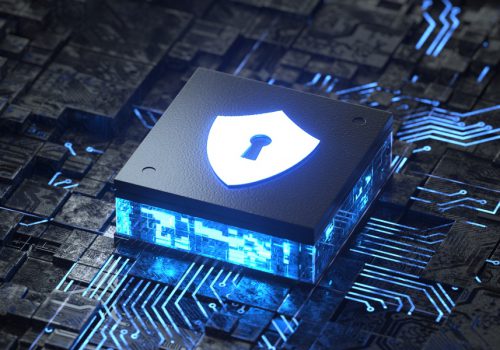Blockchain is an indispensable technology that is hitting the headlines due to the popularity of cryptocurrencies like Bitcoin and Ethereum. Is Blockchain just about cryptocurrencies? The answer is an emphatic no. Blockchain technology has moved beyond cryptocurrencies to another level.
Do you know that many companies are utilizing blockchain technology in the supply chain, tracking goods digitally across international borders in real-time? This technology has also enabled artists to safeguard patents and copyrights. Entities are using distributed blockchain ledgers to enhance the security of document verification. Blockchain solutions, if used at an initial stage, have the potential to reduce healthcare costs.
Innumerable industries, be it healthcare, supply chain, insurance, finance, media, and entertainment, etc., are all gravitating towards blockchain technology as it enhances trust, security, transparency, and the traceability of data shared across a business network.
The power and usage of blockchain technology in combination with cloud computing has enhanced significantly. Let’s understand these concepts.
Blockchain
Blockchain is an immutable shared ledger technology and its application is decentralized. There are multiple blockchain platforms available, for example: Ethereum permissionless, Hyperledger fabric permissioned, R3 Corda permissioned, etc.
Let’s unlock the key concepts of blockchain:
- Distributed ledgers: A distributed ledger is a database that can be found across all participants nodes. Unlike a centralized database, a distributed ledger is decentralized, which removes the need for a central authority or intermediary for processing, validating, or authenticating transactions
- High Security: It’s highly secured because it offers special disguise cryptography. Added with decentralization, cryptography adds another layer of protection for users. The information on the blockchain is hashed cryptographically and hashing is irreversible
- Immutability: A concept wherein the ledgers are unalterable and the user is assured of uncorrupted ledger which is the need of the hour
- Smart contract: A smart contract is a program that runs on each node. It’s a collection of code and data that resides at a specific address on the blockchain. need in trusted intermediates
- Decentralization: Decentralization is not a new concept; the network is decentralized as it isn’t controlled by any or a single person, organization, and/or entity. All the node members maintain the decentralized network which is also referred as peerto- peer (P2P) network
- Consensus mechanism: Consensus is a general agreement. Blockchain consensus mechanisms help to guarantee that all nodes on a network are synchronized and its transactions are legitimate. Consensus is responsible for validating the blocks, ordering the blocks, and ensuring everyone agrees with them. The consensus protocol is the core to the existence of blockchain platforms, behind every blockchain, there is a consensus algorithm

Consensus mechanism algorithm
Two significant, widely-used consensus mechanisms are:
- Proof-of-Work (PoW): PoW validates the block of data nodes that is essential in solving the puzzle, it works on rewards with high energy consumptions. PoW prioritizes security over speed. It requires 51% of patricians to agree on data to add it to the block
- Proof-of-Stake (PoS): With PoS, there is no question of guessing the puzzle. PoS algorithm pseudorandomly elects a node (anyone who owns the coins) to propose the next block to the blockchain. It works on low energy consumption rewards. The transition process is fast compared to PoW.
High energy consumption in blockchain technology is considered a drawback and is criticized. However, we need to understand that it is due to Proof-of-Work (PoW) consensus. Moreover, the consensus can be upgraded. Due to high energy consumption and other challenges of PoW Consensus, Ethereum is upgrading from PoW to PoS as it not only consumes less energy compared to PoW but also increases the speed and efficiency.
Cloud computing
Cloud computing provides on-demand access to compute resources like Bare-metal servers, virtual machines, security, storage, networking, database, software, etc., via the internet. In cloud computing, we have three major types of computing services like Infrastructureas- a-service (IaaS), Platform-as-a-service (PaaS), and Software-as-a-service (SaaS). Similarly, cloud service providers are offering blockchain-based technology which is known as Blockchain-as-a-service (BaaS).
Blockchain on cloud
When blockchain is deployed onto the cloud, there will be immense leverages in scalability, reliability, security, fault tolerance, data management, computing capacity with pay as you use model. Additionally, blockchain infrastructure can be created in a few minutes where nodes can be hosted in multiple availability zones and cloud-based blockchain solution can be easily integrated with other cloud services.
Blockchain frameworks like Ethereum, Hyperledger, R3 Corda, etc., are available on Cloud and provided by multiple cloud service providers (CSP).
The best thing about deploying a blockchain application onto the cloud is that all the required infrastructure to support a blockchain network (computing, storage, virtual machine, containers, etc.) is provided and managed by the cloud service provider (CSP) and the organization needs to focus only on developing the blockchain application.
Currently, even mining is being carried out using cloud computing. Approximately 25% of the Ethereum workload all over the world runs on the cloud.
Public and private blockchain vs public and private cloud – how do they differ?
The terminologies of public and private cloud are different from public and private blockchain. Now the question arises, if blockchain is implemented on a public cloud, is it a public blockchain or private blockchain?
- Public cloud: Is a pool of resources owned and managed by a cloud service provider with pay-as-youuse model.
- Private cloud: All the resources like hardware, software, etc., are owned and managed by a dedicated entity or organization with high capital expenditures and operational expenses.
- Public blockchain: Is an open network, where anyone can join the network, all the transactions are public, and all the nodes are equal, which is even called a permissionless blockchain, such as Ethereum.
- Private blockchain: A restricted network where the specific and approved participants are allowed to join. Applications tend to be less decentralized; the blockchain is controlled by a central authority for accessibility. An example of private blockchain would be Hyperledger.
The next question that arises is when designing a solution, what type of blockchain is needed, whether all participants are considered equally or whether they should have special permissions?

The guiding source to use a permissioned or permissionless blockchain technology are:
- Public / Open
- Everyone can write ledgers, only a few can read ledgers
- Public / Closed
- Everyone can write ledgers, everyone can read ledgers
- Private / Open
- Only a few can write ledgers, many can read ledgers
- Private / Closed
- Only a few can write ledgers, only a few can read ledgers
The usage cases of permissioned or permissionless blockchain technology:
- Public and open: Digital currency, online library, gaming, etc.
- Public and closed: Whistleblowers, voting systems, etc.
- Private and open: Supply chain, insurance, etc.
- Private and closed: Law enforcement, government financial records, etc.
Blockchain audit on cloud
Organizations can audit blockchain solutions on the cloud. In the blockchain technology, each and every transaction is validated and recorded with a timestamp, therefore auditors can easily verify and trace the previous records by accessing any node in the distributed network. Each transaction can be relatively traced to previous transactions. It improves the traceability and the transparency of the data stored in the blockchain.
Challenges of blockchain on cloud
- People: Lack of awareness and understanding of technology
- Process: Limited number of reference architecture like high level, low level design architecture, and security reference architecture
- Technology: New threats/vulnerabilities, using shared infrastructure/security solutions, and managing blockchain operations
- Business & Governance: Lack of regulations, governance/data sovereignty
Conclusion
Every technology has pros and cons hence the organization should evaluate the risks and challenges of adopting the blockchain technology.
Prior to migrating from traditional application to blockchain application, the foremost requirement is to clearly understand and define the existing database/technical challenges and business requirements.
The wise decision would to consider conducting the Proof of Concept (POC) of blockchain on cloud whereby organizations can test their use cases before investing on blockchain infrastructure. Once they are familiar with blockchain technology and if it meets their technical and business requirements then the organization can head towards blockchain-based application on cloud.
Whether blockchain blocks the path or clears the passage is based on an organization’s timely decision. As blockchain and cloud are a powerful mix, in future, there will be an accelerated increase in the demand for the blockchain technology on the cloud.
Disclaimer: The views and opinions expressed in this article reflect those of the author and not to his organization or company or colleagues.









